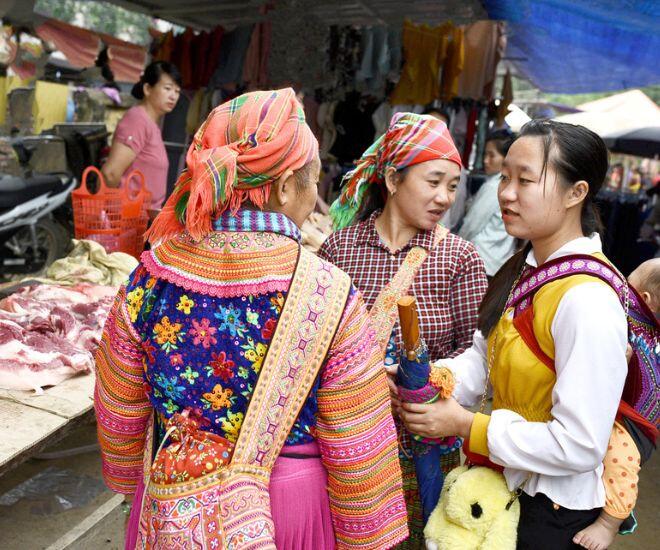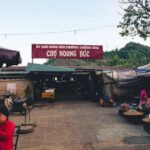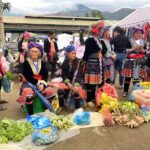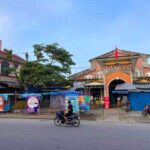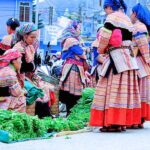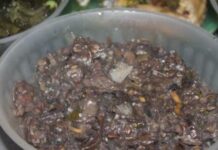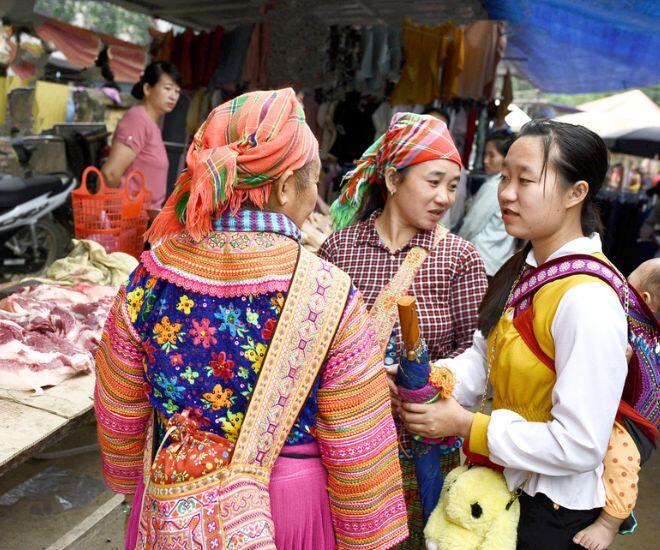
As the sun rises on Saturday, the roads of the Hung Loi Safe Zone (ATK) come alive with the footsteps and cheerful chatter of locals heading to the market. Although the marketplace is simple and rustic, it is a bustling hub for essential goods and unique mountain produce. The lively atmosphere not only reflects economic activities but also embodies profound cultural values.
No one knows exactly when the Hung Loi market began, but it has become an integral part of the community’s way of life. Each market day, field work and household chores are set aside as people of all ages don their finest traditional attire and make their way to the central market area. This long-standing custom has woven itself into the fabric of the community, creating a vibrant tapestry of daily life.
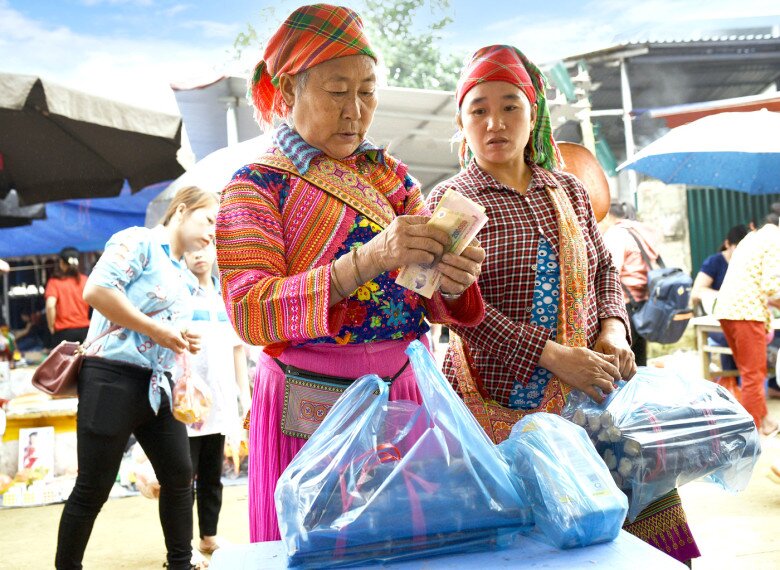
Like many highland markets across the country, the value of the Hung Loi market goes beyond mere commerce. More importantly, it is a community cultural space that fosters social connections. The market brings together people from various ethnic groups, providing an opportunity not just to sell their produce and purchase necessities but also to socialize, exchange news, and share stories. Conversations about crops, family matters, health, and simple pleasantries strengthen neighborhood bonds and maintain strong community ties. The market becomes a unique “exchange platform,” facilitating information flow, emotional support, and the preservation of close relationships.
The market offers a diverse range of goods, reflecting the local self-sufficient agricultural economy. Fresh corn, rice, vegetables, and forest bamboo shoots are displayed alongside traditionally raised chickens and pigs, all presented in a natural and rustic manner. In contrast, the items purchased are mostly essential tools and daily necessities such as knives, hoes, shoes, salt, seasoning, fish sauce, and instant noodles. This exchange of goods completes a full cycle, meeting the basic needs of the highland residents.
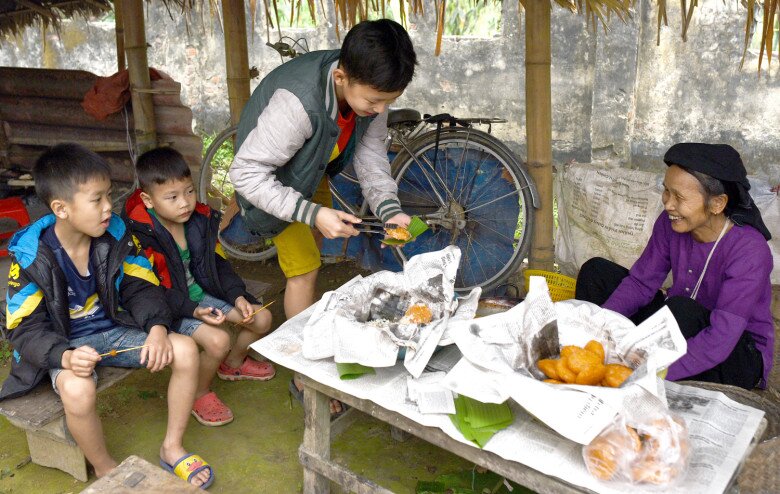
Beyond trade, the Hung Loi market serves as a recreational space for relaxation and entertainment. Many visitors come not only to buy and sell but also to enjoy the market’s unique snacks, meet friends, and catch up with long-lost relatives. This cultural tradition adds a joyful and lively atmosphere, providing a respite from the hardships of mountain life.
The market goers mainly belong to various ethnic minority groups, with the Tay and Mong groups forming the majority. The presence of multiple ethnic groups, each with their distinct culture and traditional attire, creates a colorful and culturally rich environment. Visitors to the market not only experience the bustling trade but also gain insights into the customs, traditions, attire, and languages of these ethnic communities. This cultural fusion makes the Hung Loi market a captivating destination for those seeking to explore the depths of local culture.
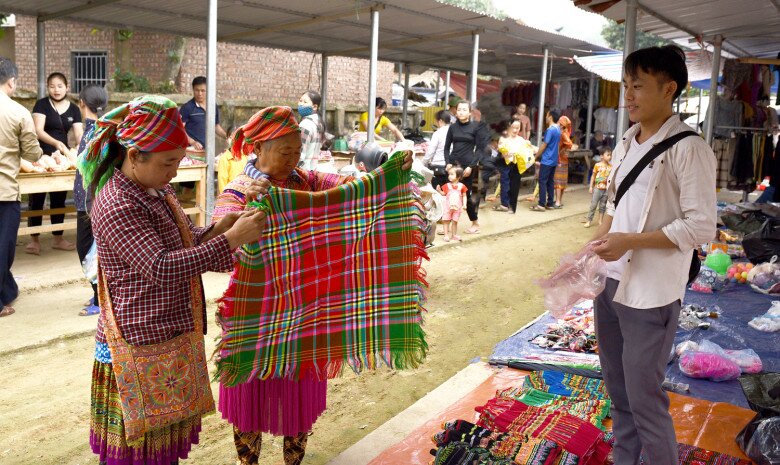
Despite being a once-a-week Saturday market, Hung Loi attracts people from far-flung and remote areas. From the most isolated villages in neighboring communes such as Trung Minh, Trung Son, Kim Quan, Dao Vien, and Cong Da, people walk for hours to reach the market. This dedication underscores the irreplaceable role of the market in the economic and cultural life of the community.
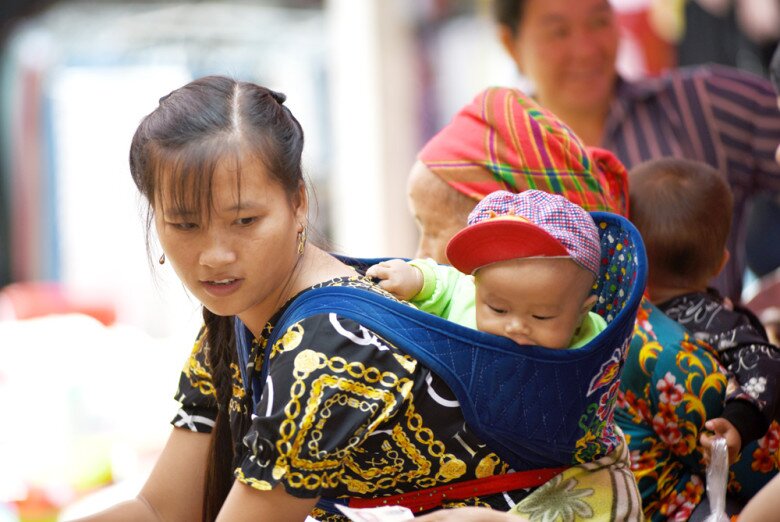
The market is carefully zoned to cater to the diverse needs of locals and visitors alike. There’s a food zone offering rustic mountain delicacies, a general store area with essential goods, and a clothing section showcasing vibrant traditional textiles. The products sold are mainly local agricultural produce, including specialty items such as wood ear mushrooms, shiitake mushrooms, dried bamboo shoots, forest vegetables, free-range pork, hill chickens, and fragrant sticky rice. These goods not only guarantee quality but also embody the authentic flavors of the mountains of Tuyen Quang.
The Hung Loi market is more than a place of trade; it is a window into the lives of highland dwellers. Each market day paints a vibrant picture, reflecting the customs, traditions, and cultural diversity of the ethnic communities that call Tuyen Quang home.
Exploring the Vibrant Lai Chau Mountain Market: A Treasure Trove of Unique Mountain Delights
The Sin Ho Fair is more than just a bustling hub for trade and commerce. It is a vibrant cultural space where members of the Mong, Dao, and Kinh ethnic groups come together. They gather to socialize, showcase their finest traditional attire, indulge in delicious specialties, and strengthen the bonds of their community. It is a celebration of diversity and a testament to the rich heritage of the region.
The Market Attached to the Most Famous Landmark in Hue is Now a Culinary “Paradise”, Luring Visitors with Irresistible Delicacies
When it comes to Hue’s cuisine, Vy Da Market is a must-visit destination, offering a glimpse into the delicate intricacies of folk gastronomy and the laid-back lifestyle of the ancient capital’s residents. Join us on a journey to explore this captivating market and uncover the secrets behind its enduring allure.

